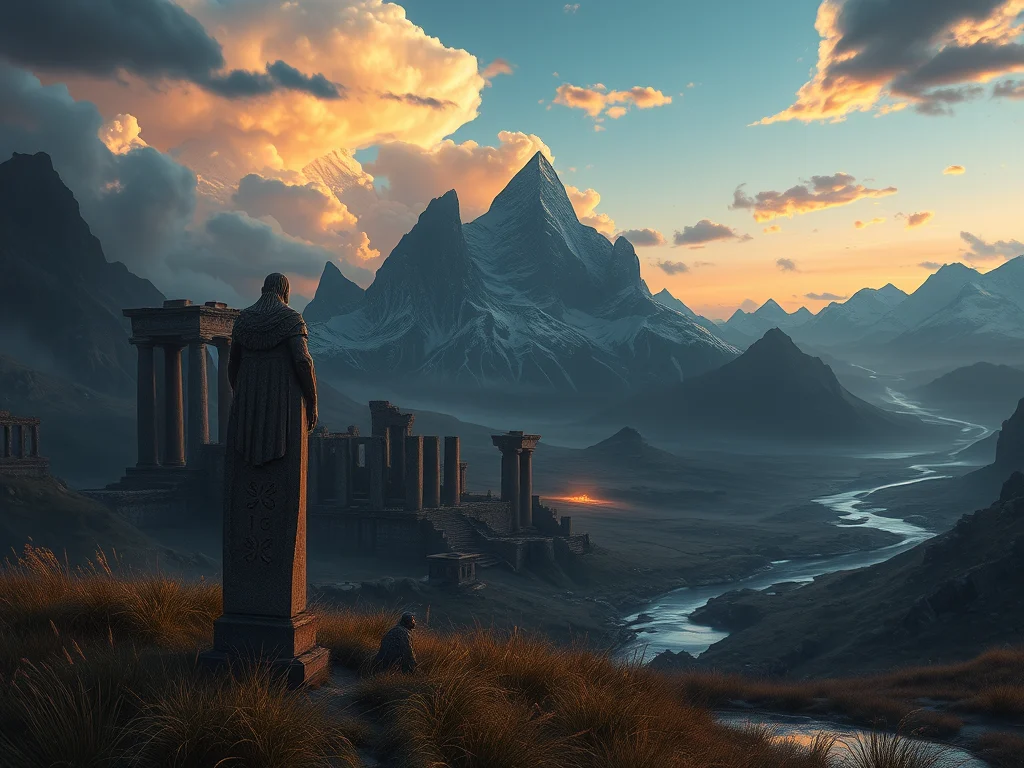Refugees from a Dying Crystal Sphere
“Stone endures where flame fails, and though gods may fade, the people remember.”
The Barazûn, known to outsiders simply as dwarves, are not children of Khassid’s soil, but exiles from a world long since turned to ash. They came not by conquest, nor by chance, but by divine petition.
Their tale begins in a dying Crystal Sphere, a realm wracked by collapse and silence. As its stars dimmed and its gods perished, one deity—a figure whose name is now lost to all tongues—rose in final defiance of oblivion. This forgotten god, wrought from stone and sorrow, entreated Aeru, sovereign of Khassid and guardian of its celestial harmony, to grant sanctuary to his people. Aeru, moved by their plight and their steadfastness, opened a path. Thus, between 200–400 AE, in the early centuries of the First Era, the dwarves passed into Khassid and were granted refuge.
The people who came to be known as the Barazûn carried only what the cosmos had not taken from them: their skill, their memory, and the silent hope of renewal. Though born of a single Sphere, they arrived scattered in tradition and tongue. Yet over the generations, their shared suffering and the trials of a new world bound them into one folk. The name of their god faded—perhaps willingly forgotten to honor the passage into a new covenant. In his place, from the fires of their forge-hymns and stone-prayers, a new pantheon emerged: the Dûn-Karr, the Lords of Stone and Flame.
The Dûn-Karr reflect the values the Barazûn hold sacred: endurance, craftsmanship, community, and the sanctity of oaths. Among these, Tolgrin Ironflare, god of wanderers, stories, and exploration, is the newest and perhaps most cherished. It is he who whispers to the bold-hearted Barazûn that the world above still holds meaning.
The Second great wound came not from gods or stars, but from men. The humans of Khassid, enamored by Barazûn steel and stonework, demanded more than trade. They bartered respect for greed, and when the dwarves resisted exploitation, they were met not with honor, but with chains and blade. Faced with this betrayal, the Barazûn vanished from the surface in a single, legendary night—leaving only sealed halls and cold forges behind.
In deep redoubts hidden beneath the mountains and carved into the bones of the world, the dwarves endured. For more than a thousand years they lived in secrecy, their culture refined in the crucible of isolation, their gods enshrined in eternal stone. The surface world became legend, and the bitterness of betrayal cooled to wary remembrance.
Now, as the Second Era dawns, signs stir that the Barazûn may once again walk beneath open sky. Guided by the lorekeepers of Tolgrin, a cautious few return to forge new ties—not of naivety, but of necessity and tempered hope. While the wounds of history are not easily forgotten, the dwarves do not seek vengeance. They seek purpose. They seek kinship that endures as stone does, even beneath fire and storm.
To this day, the Barazûn remain a people apart: stoic, enduring, and defined not by what they lost—but by what they chose to preserve. Though their god is forgotten, his final act is not. His plea to Aeru, and Aeru’s mercy in turn, echoes still in the hearts of the Barazûn: a promise that even among the ruins of worlds, life may be forged anew.
